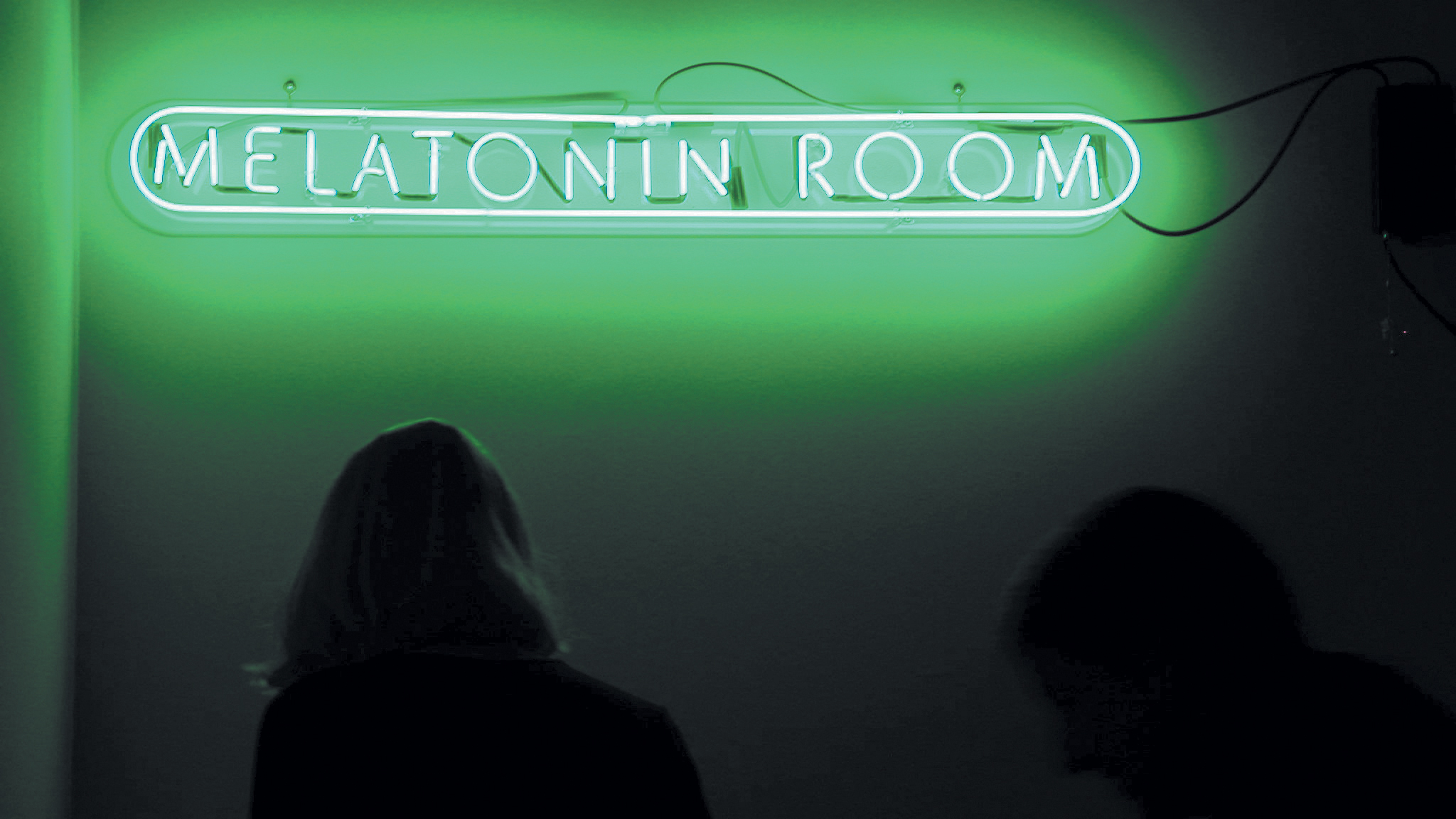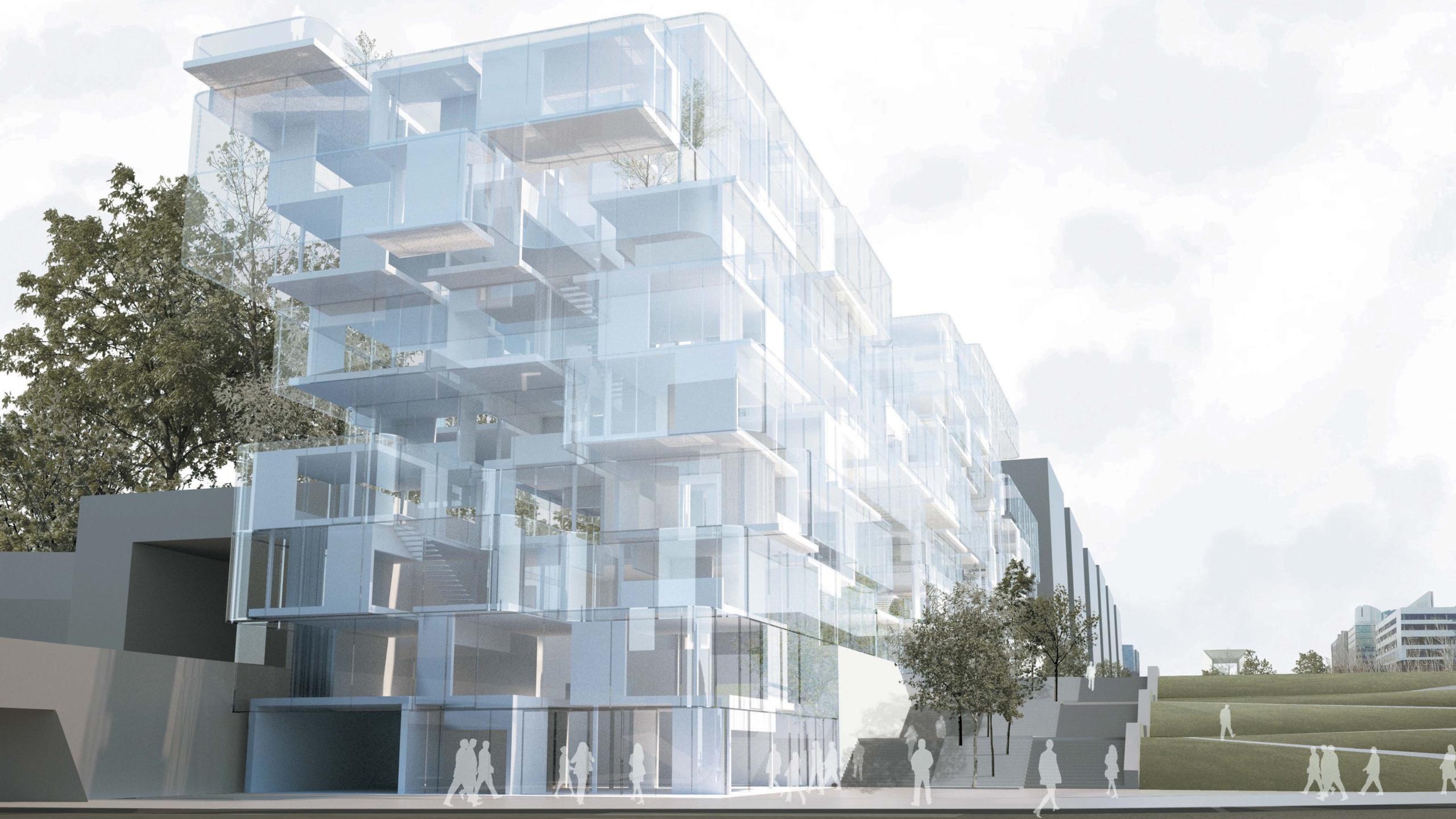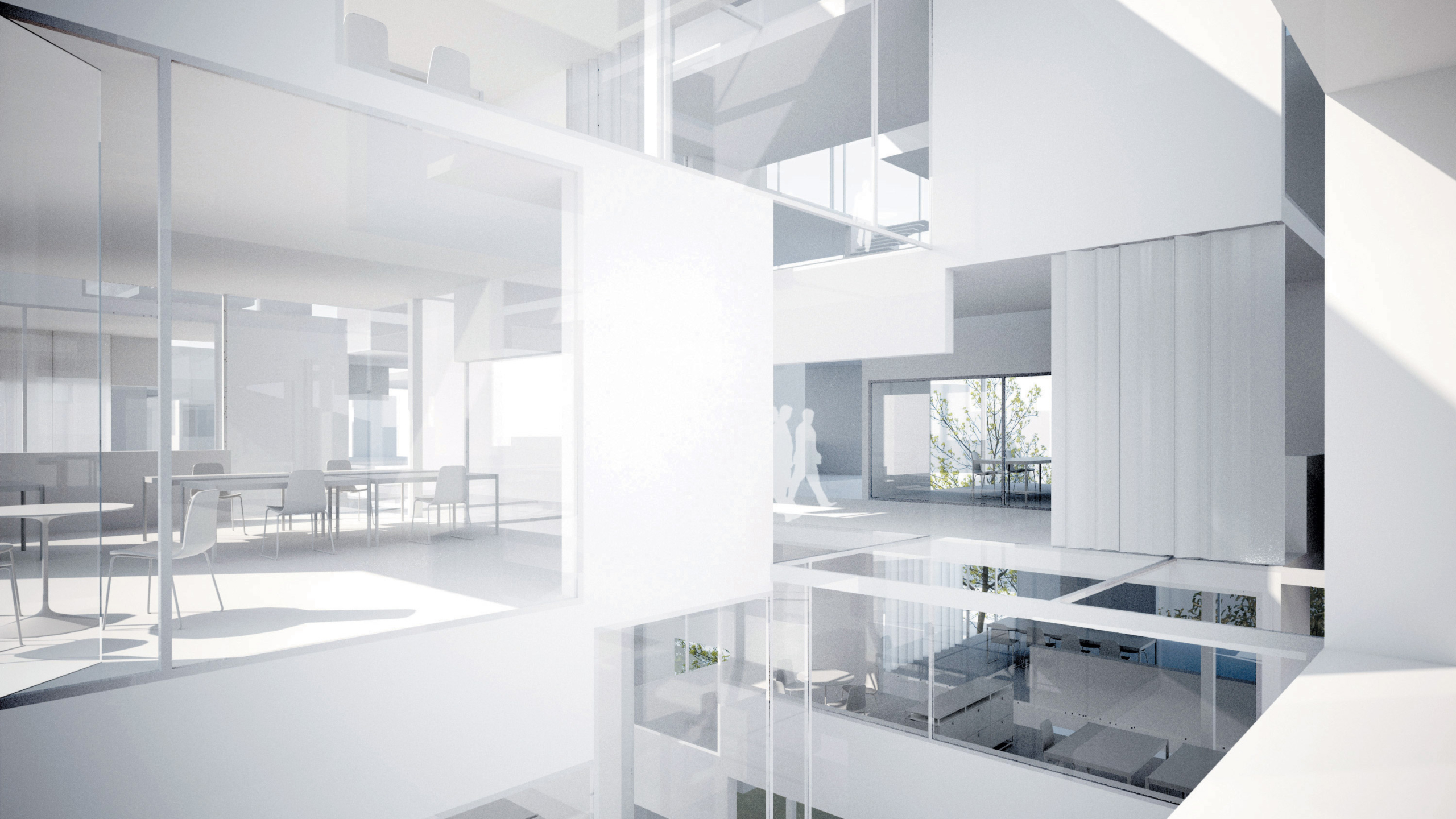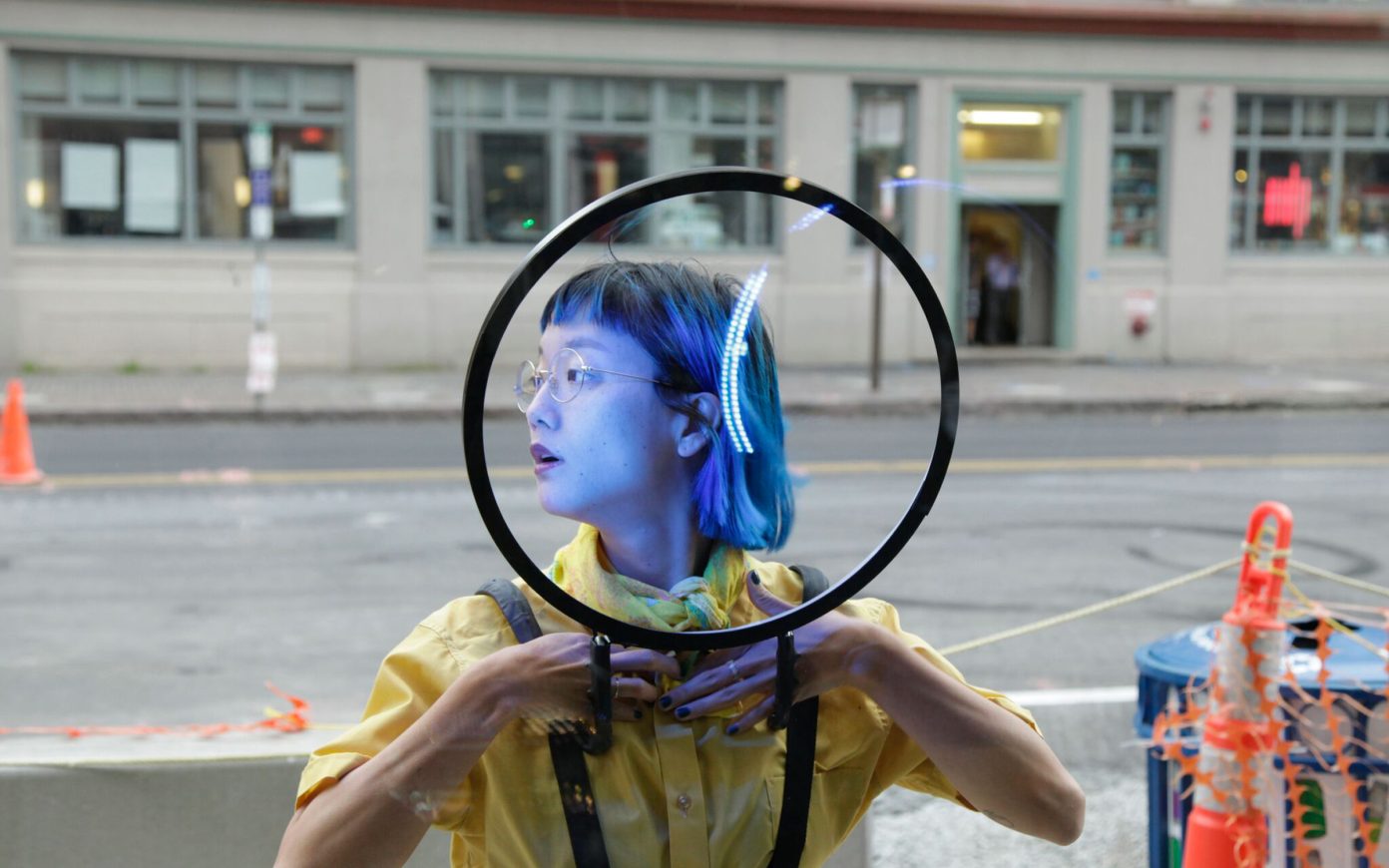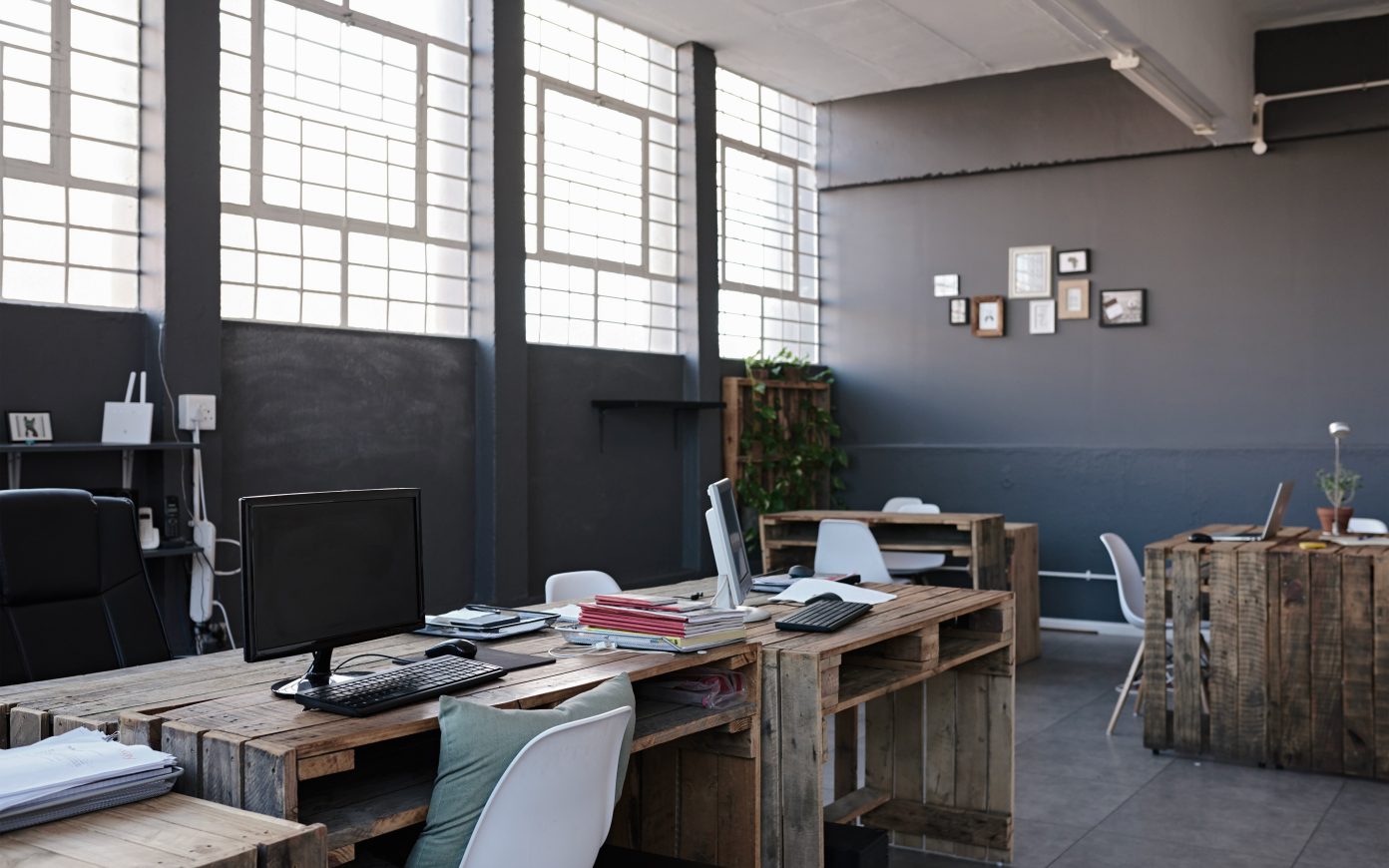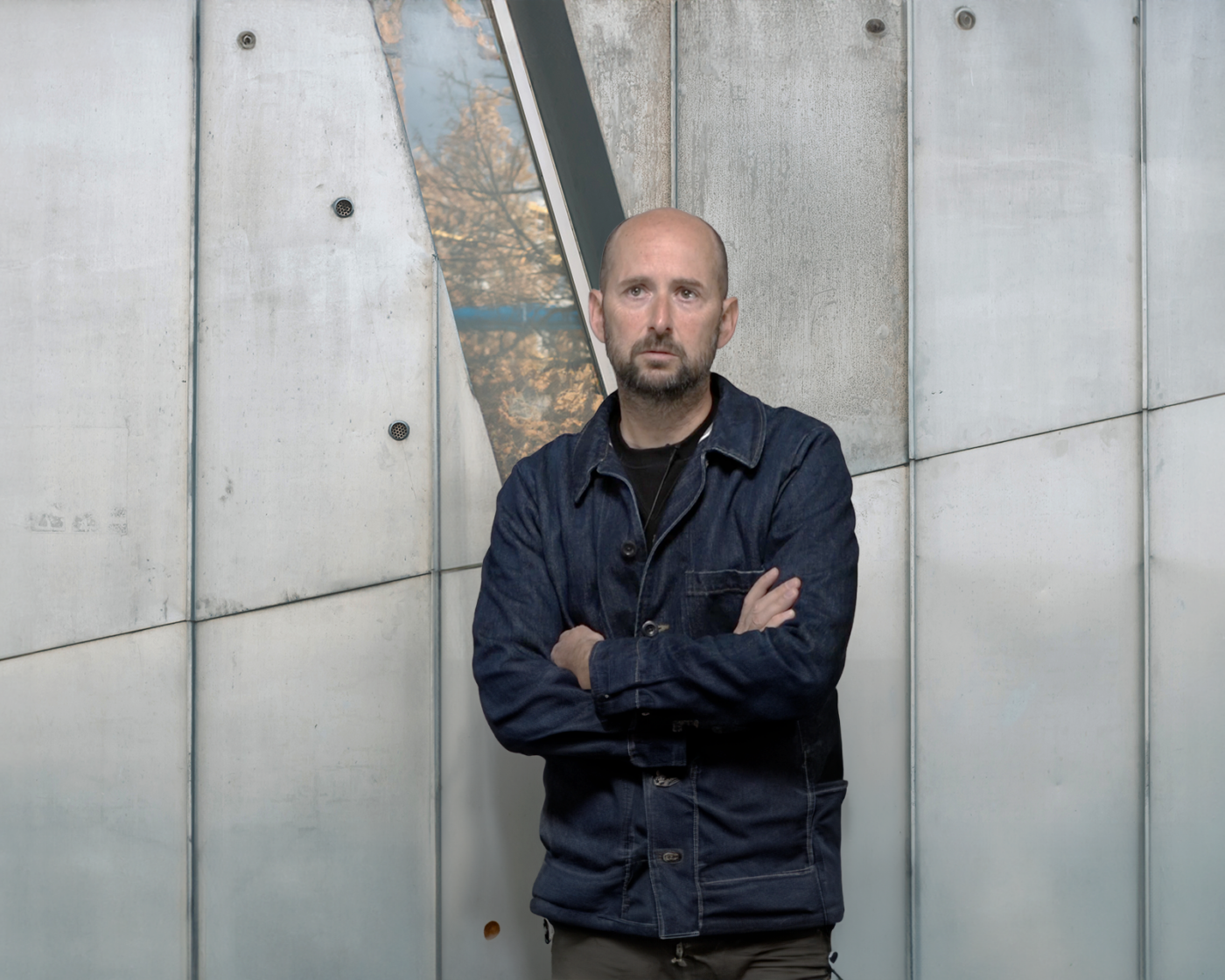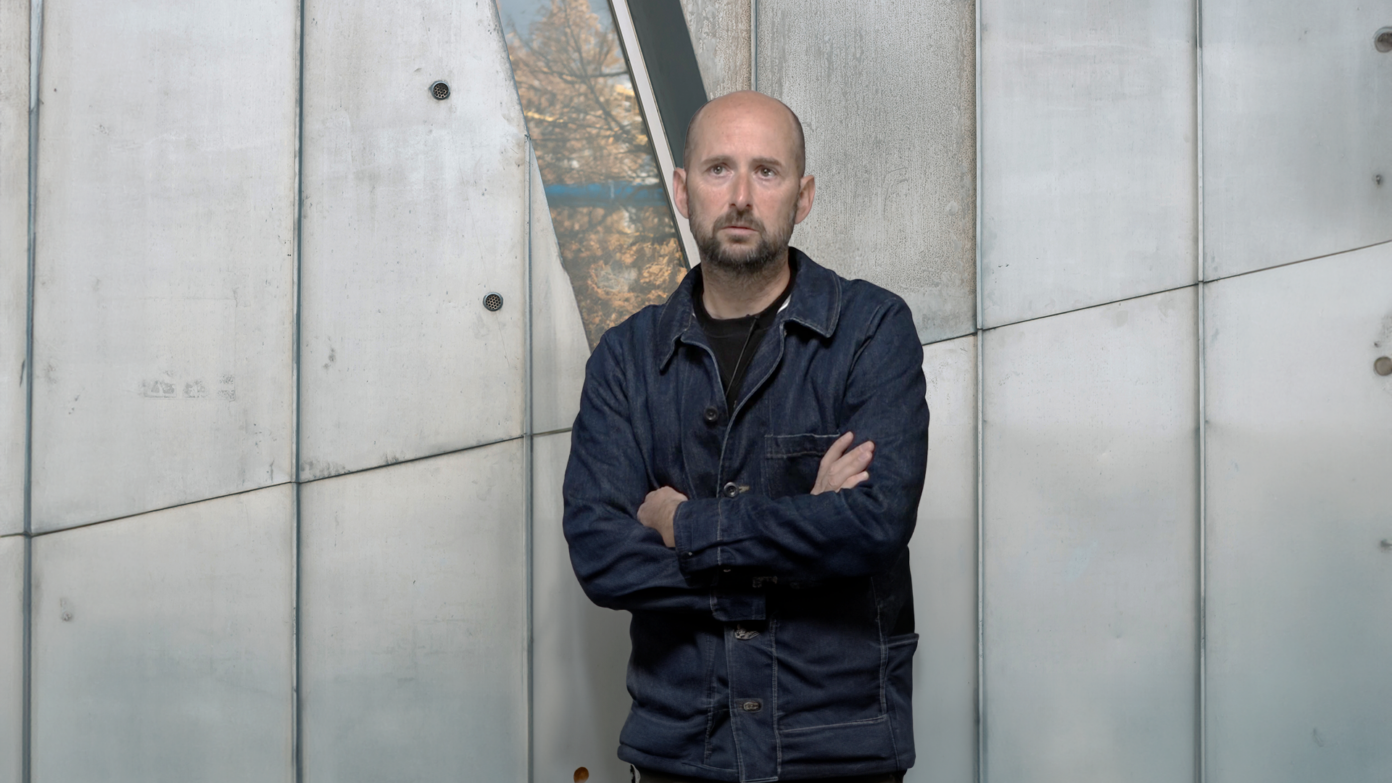Philippe Rahm : The project l’Epadesa, in Paris-La Défense which is a more complex project than the others, for which we are trying to integrate a relation to the immediate environment. It is a massive building with nine floors, and with a south and northern façade overlooking low-income housing complexes. We have thus conceived a repartition of the interiors in discourse with ventilation, thinking of the utilization of the interstitial spaces as reservoirs of new air and light circulation…this drives a sort of evaporation of the architecture by diminishing or repurposing the thicknesses of the envelope to let air and light circulate. Further, the volume of the building was reconceived so as to not block the northern winds and collect the cold; we sought to let the wind pass without the building being an obstacle and to not give to the neighborhood behind a cold pocket.
Philippe Chiambaretta : This atmospheric approach to a building could therefore lead to a new formal language, a new architecture.
Philippe Rahm : Yes, for me this is the goal: an ambition that is more architectural than political or ecological. I am more interested in the way this vision can change the architectural forms than in the political debates, of which in fact I am mostly using to push this renewal of forms. The ecological side is a constraint that I accept, but not an end: I do not use architecture to respond to ecological principals which overtake it. It is a new reality which can make architecture go out into the open, and could also re-center architecture on its own subject; while architectture has been a bit lost because it no longer speaks of fullness, of the visual, of solids, today we can return by the air, and give rise to a new spatiality.
Philippe Chiambaretta : You take thus this constraint as a factor and not as an end—which seems to me to be a good thing, if one would like to avoid transforming these elements into dogmas.
Philippe Rahm : It has become a dogma because architects are not seizing upon them before the technicians do. If architects weren’t still continuing to work like back in the 80’s, if they weren’t still refusing to understand these new realities, they would not have imposed this upon themselves in this way. The retreat of architects allowed the technicians and the material merchants, who are thus satisfied, impose them. But it is necessary to integrate the new facts, and architects, after, will have made up for their initial hesitation: as with the disciples of Rem Koolhaas now, or the digital prodigy of Greg Lynn, basing their forms on questions of renewal and founding their projects on fluids, air…
Philippe Chiambaretta : Yes—and if one takes this vision seriously, not like a fad of the moment but as a principal of reality that bears a scientific weight, it seems to me that this opens up a new way of approaching projects. This gives new measures, new factors that are more quantifiable than symbols or narrative, by which it is difficult to evaluate the adequacy of a building.
However, in the world of construction today, an element must be taken above all others: energy—because it is easily measurable, and as it represents a concrete economy, in particular for offices. It becomes, or it will become, a norm, like the norms of security. And yet, that which demonstrates your response, is that the most interesting dimensions to explore are those which are invisible, the immaterial—dimensions that are perhaps less easy to access for the offices of research or the material merchants, but which open pathways for architects. Particularly in the specific domain of the office, for which one can say that it must favor the value of the well-being of its inhabitants to the end that they can be more innovative; the office must therefore create an atmosphere which is appropriate to the specific business. This could feed back into your work, which fabricates an atmosphere via odors, a temperature, a degree of humidity…
Philippe Rahm : On the question of the environment of an office, in addition to taking into account physiological conditions (the amount of light, the quality of the spectrums emitted), I think that it is better not to seek an optimal or most homogeneous but, to the contrary, create diversities. On the difference of Yves Klein, for whom one would be in a complete opening, or that of Le Corbusier, who sought the perfect optimization of climates, today the trend is more towards creating differentiated space, gradients of temperature, of light…One could create offices out of spaces more or less laminated, more or less heat according to whether it is a space of transit or of resting a certain time, and create in this way a climatic-spatial cartography. But there again, one could reverse the thing; one could in effect imagine that these ideas open on a functionalistic determinism of places, whereas one could offer flexible spaces or options, like making between the 19th and the 21st floors a space open for whatever use. One could thus envision the actualization of such ideas, instead of a regulated optimization, as a creation of spatial qualities which have variations and are adaptable.
Philippe Chiambaretta : One of the interesting points, in effect, of an office environment as it is being thought of today, is the dichotomy between, on one hand, a mass standardization (due to the logic of production which tends towards well-calibrated elements, a uniform standard) and, on the other hand, a need by the individual for micro-climates tailored towards workings, to make a phone call…
Philippe Rahm : Yes, and one could exactly split the two: proposing places that are tight acoustically or conversely very open. Modernity according to me is there, in the capacity to offer variations of sound, temperature, humidity—spatial varieties within which different functions can take place following the moments of the day, of work, the desires of the inhabitants themselves.
Translated from French by Heather Tipton
(This article was published in Stream 02 in 2012.)
